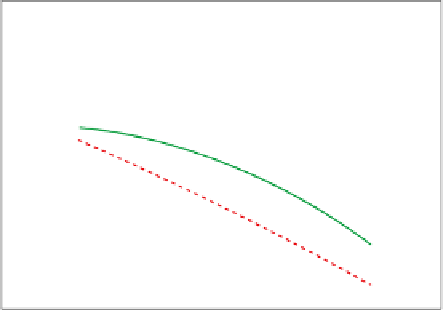Geoscience Reference
In-Depth Information
60
40
20
0
20
-40
-60
0
1
2 3
Average change in local temperature (°)
4
5
6
Figure 14.
Estimated impact of climate change on wheat yields for low- latitude regions.
The lines show the summary results drawn from about fi fty published studies at multiple
sites of yields per acre as a function of mean local temperature change. The lower line
shows the response without adaptations, while the upper line shows yield changes
with a limited set of adaptations, including CO
2
fertilization.
different with adaptation and CO
2
fertilization. Wheat yields in low-
latitude regions with adaptation would be positive for temperature in-
creases up to 3°C. This is the climate change that would be expected
late in this century. Yields would begin to decline after the 3°C change
and would decline as much as 30 percent at a 5°C temperature increase.
The same survey found that the break-even temperature change for rice
in low-latitude regions is estimated to be 4°C. For warming less than
4°C, rice yields with adaptation are predicted to increase. It should be
added that most studies are very conservative in their assumptions about
adaptations and probably underestimate the potential for upward shifts
in the adaptation curve in Figure 14.
11
One of the major factors affecting all aspects of climate change is
technological change. It affects emissions through its impact on eco-












